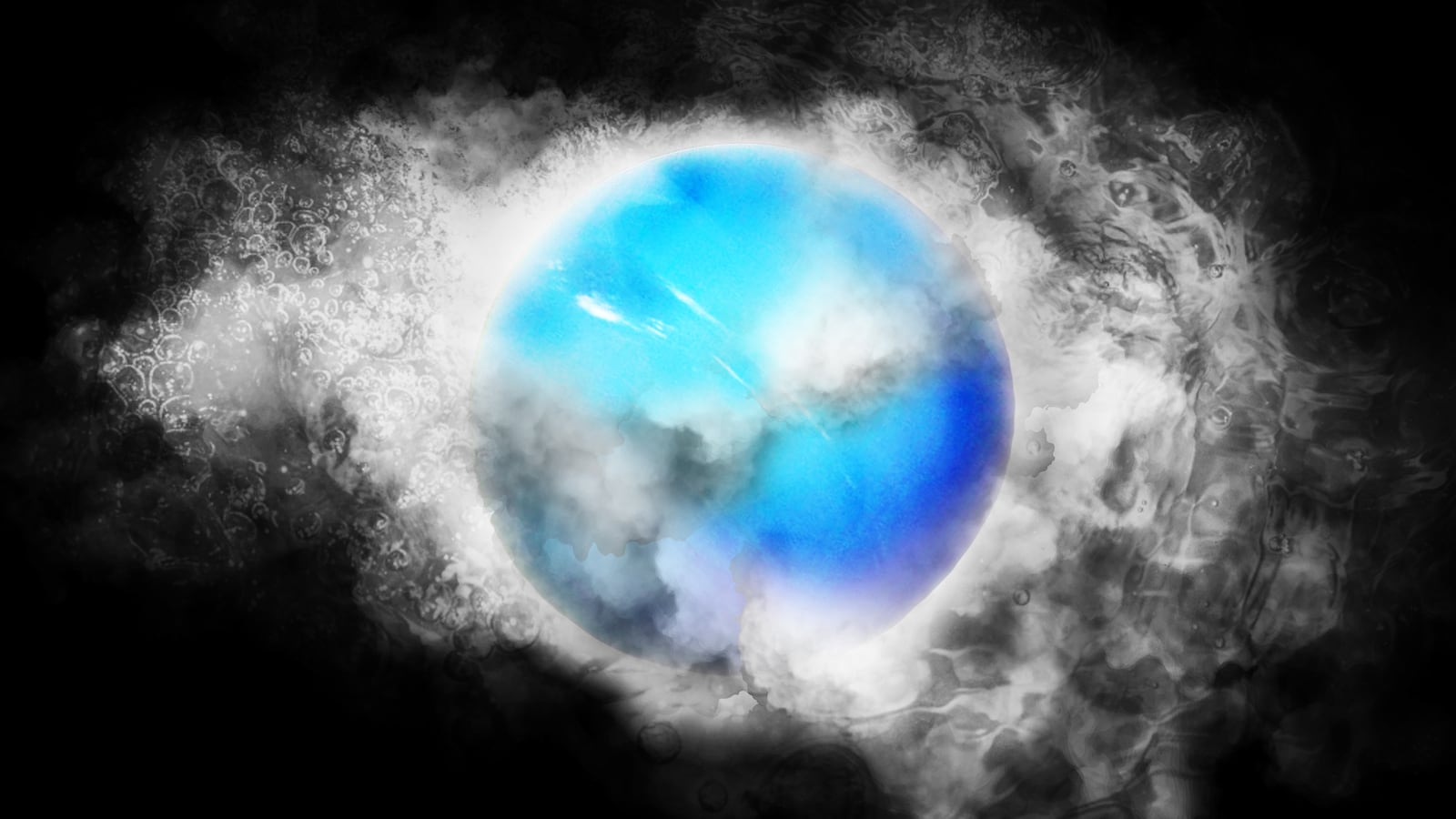Astronomers sifting through data from a NASA planet-hunting satellite have hit the jackpot: a common type of planet 131 light-years away called TOI-1759b, with an extremely uncommon story to tell. Thanks to its close proximity to its host star, the planet's atmosphere appears to be evaporating into dead expanse of space—extremely fast, by astronomical standards.
Watching this radiation-induced “photoevaporation,” reported on in a new study led by Eder Martioli at the Laboratório Nacional de Astrofísica in Brazil, could help us understand one of the weirdest mysteries in modern astronomy. As we continue to discover more planets out there beyond our solar system—what we call exoplanets—there’s an inexplicable absence of planets the size of Neptune or slightly smaller (“sub-Neptunes”) in orbits close to their host stars.
Just by sheer probability, we ought to be discovering more of these mid-sized planets that manage to complete entire orbits around their host stars in just a few days. Instead, we’re left with a planetary dead zone for medium planets that astronomers call the “sub-Neptune desert.” All of this begs the question: How can there be so many medium-sized planets out there, but so few medium-sized planets in orbits close to their stars?
This isn’t simply a compelling question for astronomers who want to nerd out about planetary formation. Measuring atmospheric evaporation might also help us narrow our search for alien life in the universe—something many more people can get behind.

An artist's conception of HD 209458b, another exoplanet known to be shedding its atmosphere thanks to how close it orbits its sun.
NASA, European Space Agency, Alfred Vidal-Madjar (Institut d'Astrophysique de Paris, CNRS)One theory is that sub-Neptunes are just the right size, density and composition that when they are exposed to the hot light of a really close star, they simply can’t hold onto their atmospheres. All that energized hydrogen wafts up and out.
On gassier and less dense planets with weaker gravities, stellar radiation can kick off a process astronomers call “hydrogen escape” that eventually strips away all the gas that makes up most of the atmosphere, leaving behind inert rocky nubs that are just a fraction of the planet’s original size.
Bigger planets, by contrast, tend to cling more tightly to their atmospheres, preventing runaway hydrogen escape. Smaller planets with higher gravity, Earth among them, also enjoy this protection. A small amount of hydrogen does leak from our own planet’s upper atmosphere, but the leak isn’t fast enough to really matter, so we remain all warm and fuzzy down here.
It seems to be the unique fate of close-orbiting sub-Neptunes to lose their atmospheres and turn into smaller, naked rocks. The whole process might take hundreds of millions, or even billions, of years.
Everywhere we look in space, we see these tiny, rocky, close-orbiting planets—the possible leftovers of sub-Neptunes that underwent possible stellar scrubbing potentially millions or billions of years ago. “Fossils,” Martioli called them.
Hydrogen-escape might be turning TOI-1759b into one of these fossils, robbing our galaxy of yet another one of its many medium planets and further widening the sub-Neptune desert.
“If we catch this process in action by detecting the hydrogen-escape in TOI-1759b, we should be able to quantify the contribution of this process” to the creation of the desert, Martioli told The Daily Beast.
Martioli and his team found TOI-1759b in reams of data collected by NASA’s Transiting Exoplanet Survey Satellite (TESS), which launched in 2018. They announced their discovery in their new paper, a preprint of which appeared on-line this month (though has yet to be peer-reviewed).
TESS's clutch of high-tech cameras can inspect far-away stars and look for the shadows of planets passing in front. In the last couple decades, this “transit” survey method has found nearly 5,000 distant exoplanets in star systems other than our own. Their light signatures, registered with ultraviolet filters, can indicate the movement of gasses in their atmospheres.
At least half of all known exoplanets are between the size of Earth and Neptune, the sub-Neptune range. But only a handful of the sub-Neptunes are in close orbits to their stars. One lucky sub-Neptune with a tight orbit, NGTS-4b, seems stable—perhaps because it has an unusually massive core that clings more strongly to its atmosphere. There's no observable hydrogen-escape.
TOI-1759b is farther from its star than NGTS-4b is—in fact, TOI-1759b is just outside the normal boundaries of the sub-Neptune desert, according to George McDonald, a Rutgers astronomer. But critically, ultraviolet snapshots could indicate it’s losing its atmosphere. It might be the best place to observe an evaporating atmosphere in realtime since it's so near to us (131 light-years is just a stone's throw in space).

An artist's illustration of TESS.
NASAIdeally, someone could point the new James Webb Space Telescope at TOI-1759b, Martioli said. But he’s not counting on it, believing the new space telescope’s 21-foot-wide mirror to be overkill for this kind of study. “The evaporating atmosphere of this planet should be easily detectable even with ground-based facilities,” he said.
But spotting the hydrogen-escape process on a faraway planet is one thing. Calculating just how much hydrogen is escaping, and how fast, is a different matter. “Escaping hydrogen is generally hard to measure,” Étienne Artigau, a Université de Montréal astrophysicist and a member of Martioli's team, told The Daily Beast.
Mathematical models for hydrogen-escape, based in part on data from Earth’s own atmosphere and the atmospheres of planets and moons in our solar system, still include a lot of assumptions, and might not always apply to distant exoplanets.
Confirming and measuring photoevaporation on TOI-1759b could help us refine our models for hydrogen escape and, by extension, our models for planetary evolution, too. Not only could that help us spot planets that are losing their atmospheres and make the sub-Neptune a little less mysterious, it might also tell us where to look for planets that aren’t losing their atmospheres.
That has obvious implications for our ever-expanding search for alien life. As far as we know, a stable atmosphere is a prerequisite for biological evolution.
TOI-1759b’s star is a red dwarf, making it smaller and cooler than our own sun, a yellow dwarf. There are a lot of red dwarf systems around us in the Milky Way galaxy. Many of those systems have planets that are slightly smaller than sub-Neptunes but slightly larger than Earth, called “super-Earths.”
“The very different properties of red dwarfs versus sun-like stars means there is much unknown about how habitable these planets truly are,” McDonald said.
If astronomers can calculate the rate of hydrogen-escape on TOI-1759b, they can begin to guess which red-dwarf-orbiting super-Earths might have very low rates of escape—and possibly stable atmospheres where life might thrive.
Those might be the first clues to helping finally confirm whether or not we're alone in the universe. And it might all start with an ill-fated sub-Neptune that's passing a lot of gas into space.





